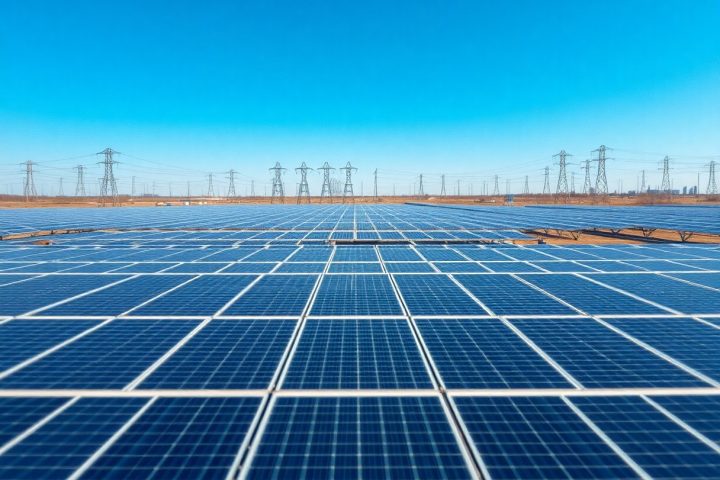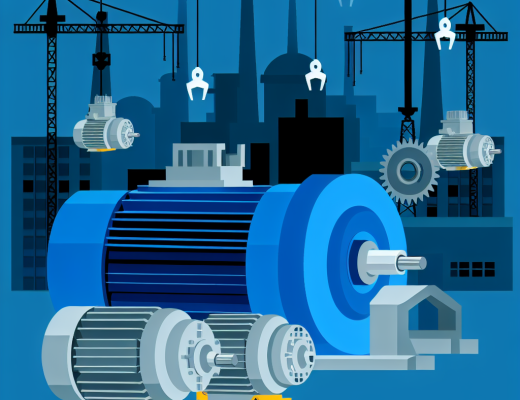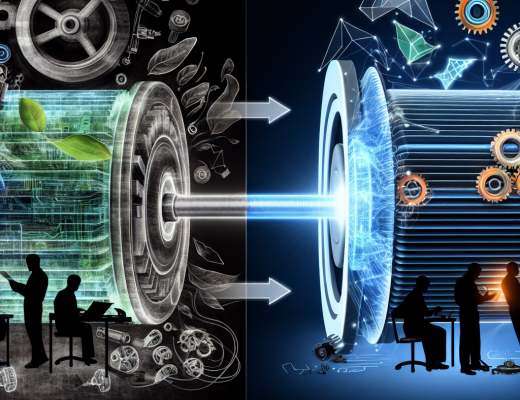Grid integration is vital for understanding how solar power plants contribute to your energy supply. In this post, you will discover the inner workings of solar power plants, including how they convert sunlight into electricity. We’ll also explore their impact on the energy grid, addressing both the benefits and challenges they present. By understanding these dynamics, you can grasp how solar energy plays a vital role in creating a more sustainable and reliable energy future for yourself and your community.
Understanding Solar Power Plants
Your knowledge of solar power plants begins with an understanding of their vital components and functionality. These facilities harness solar energy, converting it into electricity that can power homes and businesses. Through various systems and technologies, solar power plants can provide renewable energy, contributing to sustainability and reducing reliance on fossil fuels.
Types of Solar Power Plants
Your awareness of solar power is expanded through the different types of solar power plants, including:
- Photovoltaic (PV) Systems
- Concentrated Solar Power (CSP) Systems
- Hybrid Systems
- Community Solar Farms
- Floating Solar Farms
After exploring these types, you’ll see how each contributes uniquely to the energy grid.
| Type | Description |
| Photovoltaic (PV) | Uses solar panels to convert sunlight directly into electricity. |
| Concentrated Solar Power (CSP) | Utilizes mirrors to concentrate sunlight and produce steam for electricity generation. |
| Hybrid Systems | Combines solar with other energy sources for enhanced efficiency. |
| Community Solar Farms | Allows multiple users to access shared solar power resources. |
| Floating Solar Farms | Installs solar panels on bodies of water to minimize land use. |
How Solar Panels Convert Sunlight to Electricity
One of the remarkable processes involved in solar power is how solar panels convert sunlight into electricity. This process begins when sunlight hits the solar cells, usually made from silicon, creating an electric field and producing direct current (DC) electricity.
Another significant aspect is that the generated DC electricity often needs to be converted into alternating current (AC) electricity for compatibility with the energy grid and household appliances. This conversion is achieved through an inverter, allowing the renewable energy generated by solar panels to seamlessly integrate into your electricity supply, promoting sustainability and reducing your carbon footprint.
Components of a Solar Power Plant
Now, a solar power plant is composed of several vital components that work together to convert sunlight into usable electricity. Primarily, these components include solar modules, inverters, mounting systems, and the electrical infrastructure. Each component plays a specific role in optimizing energy production, ensuring efficiency, and maintaining safety throughout the system. Understanding these components helps you appreciate how solar power plants function and their significance in the energy grid.
Solar Modules
Beside being the heart of any solar power plant, solar modules, or solar panels, convert sunlight directly into electricity through the photovoltaic effect. They consist of numerous solar cells, typically made from silicon, that generate electric current when exposed to sunlight. When you install these modules, they crucially serve as the primary source of energy for the entire system.
Inverters and Other Essential Components
On the other hand, inverters are key devices that convert the direct current (DC) electricity produced by solar modules into alternating current (AC), which is suitable for use in homes and on the power grid. Additionally, other components such as mounting systems, cabling, and monitoring equipment ensure that your solar power plant operates efficiently and reliably.
A significant part of the efficiency in your solar power plant lies in the inverters and other crucial components. Inverters can vary in type, such as string inverters, microinverters, or central inverters, each offering different levels of performance based on your installation’s needs. Good quality inverters enhance the overall energy output while also providing monitoring capabilities that give you real-time information about your system’s performance. Together with proper installation and maintenance of other components, these devices maximize the energy capture from sunlight and ensure your investment in solar energy pays off.
The Energy Conversion Process
If you understand the energy conversion process in solar power plants, you’ll appreciate how sunlight transforms into usable energy. This process begins when solar panels capture sunlight, converting it into direct current (DC) electricity. An inverter then transforms this DC electricity into alternating current (AC), which is the form used in homes and businesses. Finally, this electricity is fed into the energy grid, providing power for countless users.
Photovoltaic Effect
Above all, the photovoltaic effect is the cornerstone of solar energy conversion. When sunlight hits the solar cells in your panels, it excites electrons, creating an electric current. This interaction between light and material is what makes solar technology effective, enabling renewable energy generation and leading to a sustainable energy future.
Energy Storage Solutions
The advantage of energy storage solutions lies in their ability to store excess energy generated by solar power plants. This stored energy can be utilized when sunlight is scarce, ensuring a continuous power supply. By integrating batteries or other storage technologies, you can enjoy the benefits of solar energy even during the night or on cloudy days.
Plus, investing in energy storage solutions allows you to optimize your solar energy usage and increase your energy independence. With advancements in battery technology, you can store more energy than ever before, making your reliance on the grid less significant. This not only enhances your energy security but also contributes to a more stable energy supply for your home or business.
Benefits of Solar Power Plants
For those considering renewable energy solutions, solar power plants provide numerous benefits that enhance both energy independence and sustainability. By harnessing sunlight, these plants reduce reliance on fossil fuels, lower electricity costs, and contribute to a cleaner environment. Moreover, they can generate energy for local communities, helping to stabilize the energy grid and support economic growth. Embracing solar technology allows you to take part in a more sustainable future while enjoying the financial advantages that come with it.
Environmental Impact
To appreciate the environmental impact of solar power plants, you must recognize how they significantly reduce greenhouse gas emissions. Unlike fossil fuel energy production, solar energy enables clean power generation, leading to improved air quality and a decrease in pollutants. Furthermore, solar plants require minimal water usage, helping to conserve this precious resource. By opting for solar energy, you actively contribute to the preservation of natural ecosystems and combat climate change.
Economic Advantages
Behind the environmental benefits, solar power plants offer substantial economic advantages that can enhance your financial well-being. As technology advances, the cost of setting up solar systems continues to decline, making it accessible for both individuals and businesses. Additionally, solar plants create jobs in installation, maintenance, and manufacturing, boosting local economies and fostering community development.
Considering these economic advantages, investing in solar energy can lead to long-term savings on electricity bills and increase the value of your property. With various incentives and tax breaks often available, you can significantly reduce upfront costs while enjoying lower electricity expenses. By switching to solar, you not only secure your energy future but also position yourself at the forefront of a growing industry, ultimately translating to greater financial stability and potential wealth generation.
Challenges Facing Solar Power Integration
All solar power integration faces a variety of obstacles that can affect efficiency, reliability, and overall impact on the energy grid. These challenges include fluctuating energy production, grid stability issues, and the need for supportive policies and regulations. As you explore these factors, it’s important to understand how they can shape the future of solar energy and its contribution to a sustainable energy landscape.
Grid Stability Issues
Above all, grid stability is a significant concern when integrating solar power. The intermittent nature of solar energy can lead to fluctuations in supply, which if not managed properly, may strain existing grid infrastructure. As you consider solar energy implementation, it’s necessary to acknowledge the balancing acts that grid operators must perform to ensure consistent power delivery while accommodating variable solar generation.
Policy and Regulatory Hurdles
The path to effective solar power integration is often obstructed by policy and regulatory challenges. These hurdles can impede the development and deployment of solar energy projects, hampering your ability to tap into its full potential.
Hurdles pose a significant barrier to solar energy deployment, with a range of outdated regulations and complex permitting processes complicating the path forward. As you navigate the energy landscape, you may encounter issues relating to interconnection standards, incentives, and local government policies, which require advocacy and stakeholder engagement. Understanding these issues helps you identify pathways to overcoming obstacles, ensuring that your solar initiatives can effectively contribute to a more resilient and sustainable energy grid.
Future Trends in Solar Energy
Unlike traditional energy sources, solar energy is expected to dominate the renewable sector as technology advances and costs decline. You can anticipate expansive growth in solar power installations, innovations in energy storage, and the integration of solar energy into smart grids. This shift not only enhances energy efficiency but also promotes sustainability, reflecting a global commitment to reducing reliance on fossil fuels.
Technological Innovations
Behind the scenes, groundbreaking advancements in solar technology are transforming the industry. You will find innovations such as bifacial solar panels, improved photovoltaic materials, and streamlined manufacturing processes, all enhancing energy output and lowering installation costs. As these technologies evolve, you can expect solar energy to become even more accessible and cost-effective.
Growth of Solar Farms Worldwide
Across the globe, the establishment of solar farms is soaring, dramatically increasing the proportion of solar energy in the power generation mix. You can observe countries investing heavily in large-scale solar projects, leading to significant shifts in energy production. This growth is not just limited to sunny regions; you will see solar farms being strategically placed in various climates to maximize energy capture.
Hence, the proliferation of solar farms worldwide serves as a testament to the growing recognition of solar energy’s potential. Your awareness of this trend may prompt you to explore opportunities in solar investments and sustainable practices. With governments and private sectors aligning on energy goals, you can expect an ever-expanding role for solar power in the energy grid, promoting not just clean energy but also energy independence. The future of energy is undoubtedly shifting towards a more solar-centered approach, which could significantly influence your energy choices in the years to come.
To wrap up
Drawing together the insights on how solar power plants work, you can appreciate their significant role in transforming the energy grid. By harnessing sunlight and converting it into electricity, these plants not only reduce reliance on fossil fuels but also contribute to a cleaner environment. As you consider the future of energy production, when you understand the operational dynamics of solar plants and their integration into the energy grid, you recognize their potential to enhance sustainability while meeting your energy needs efficiently.




